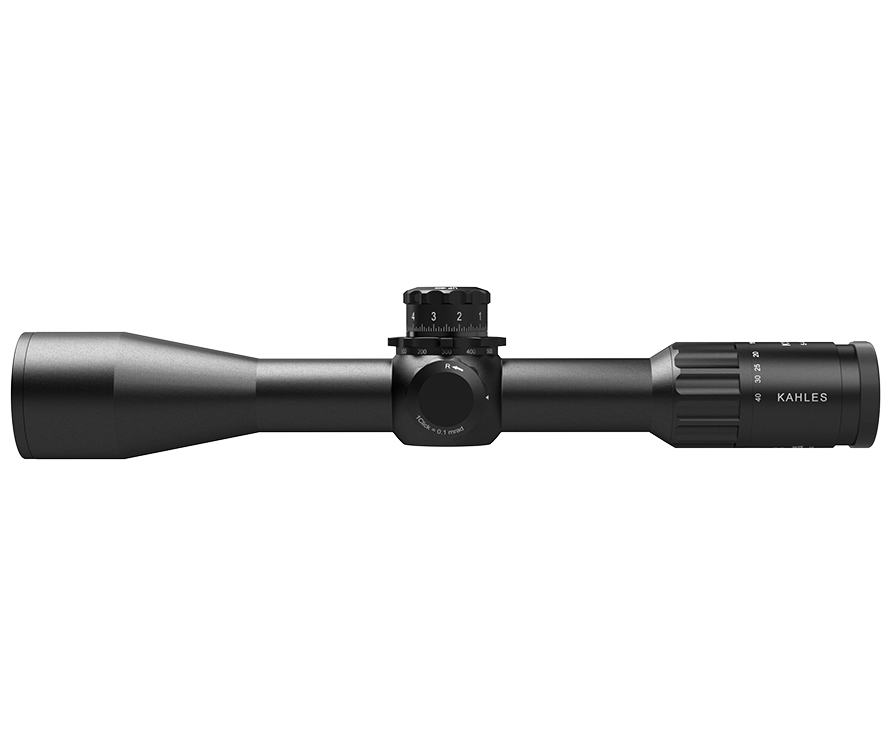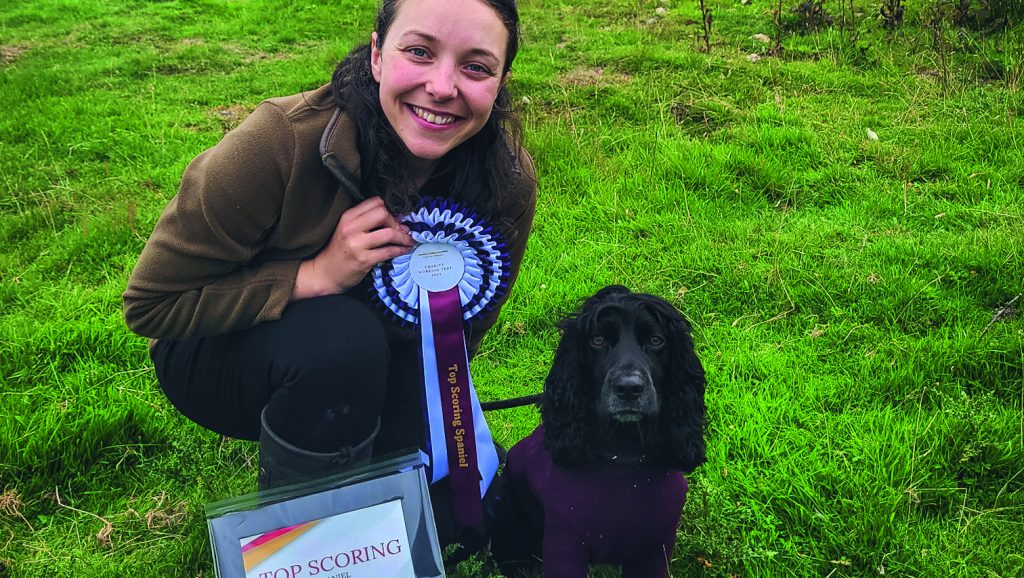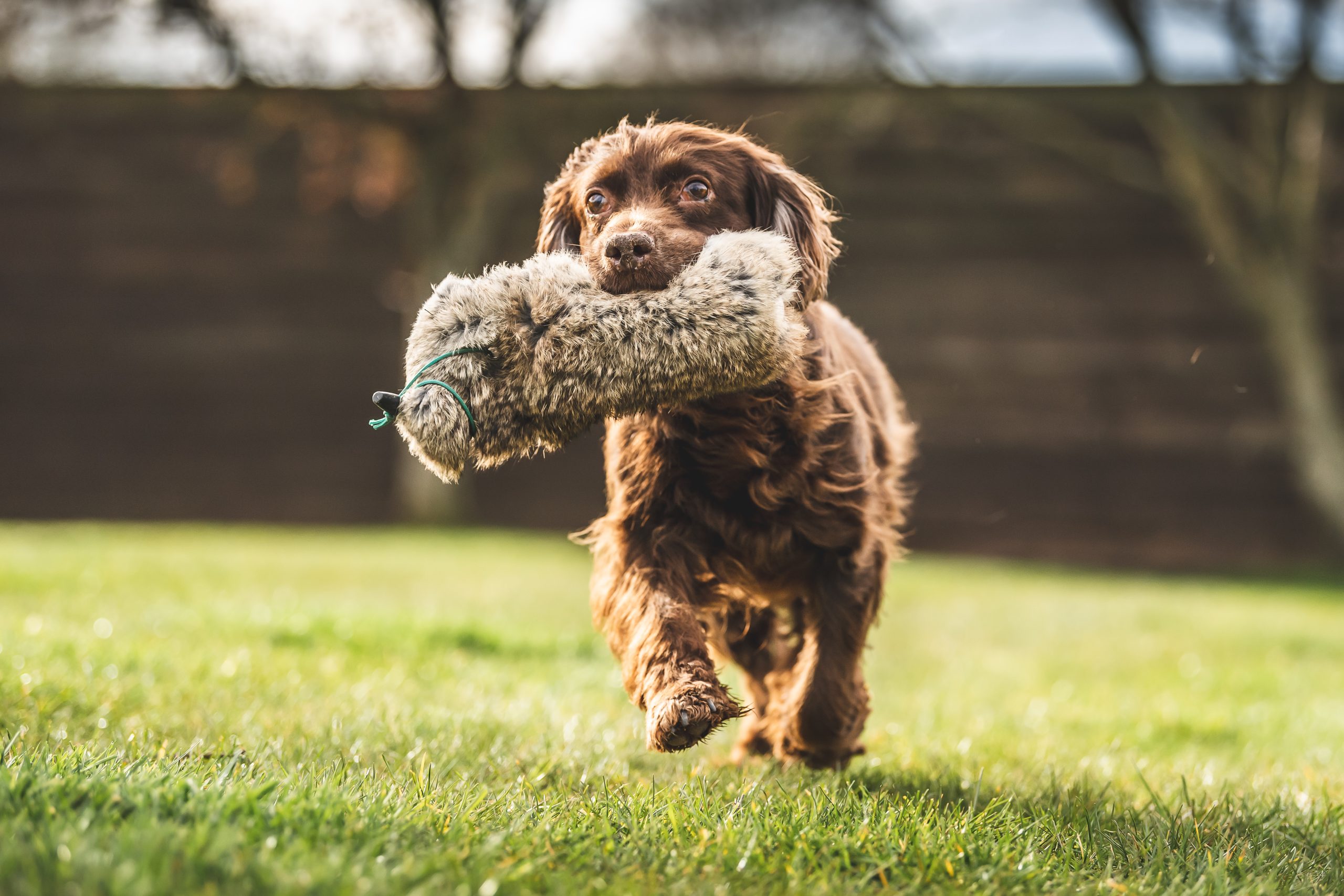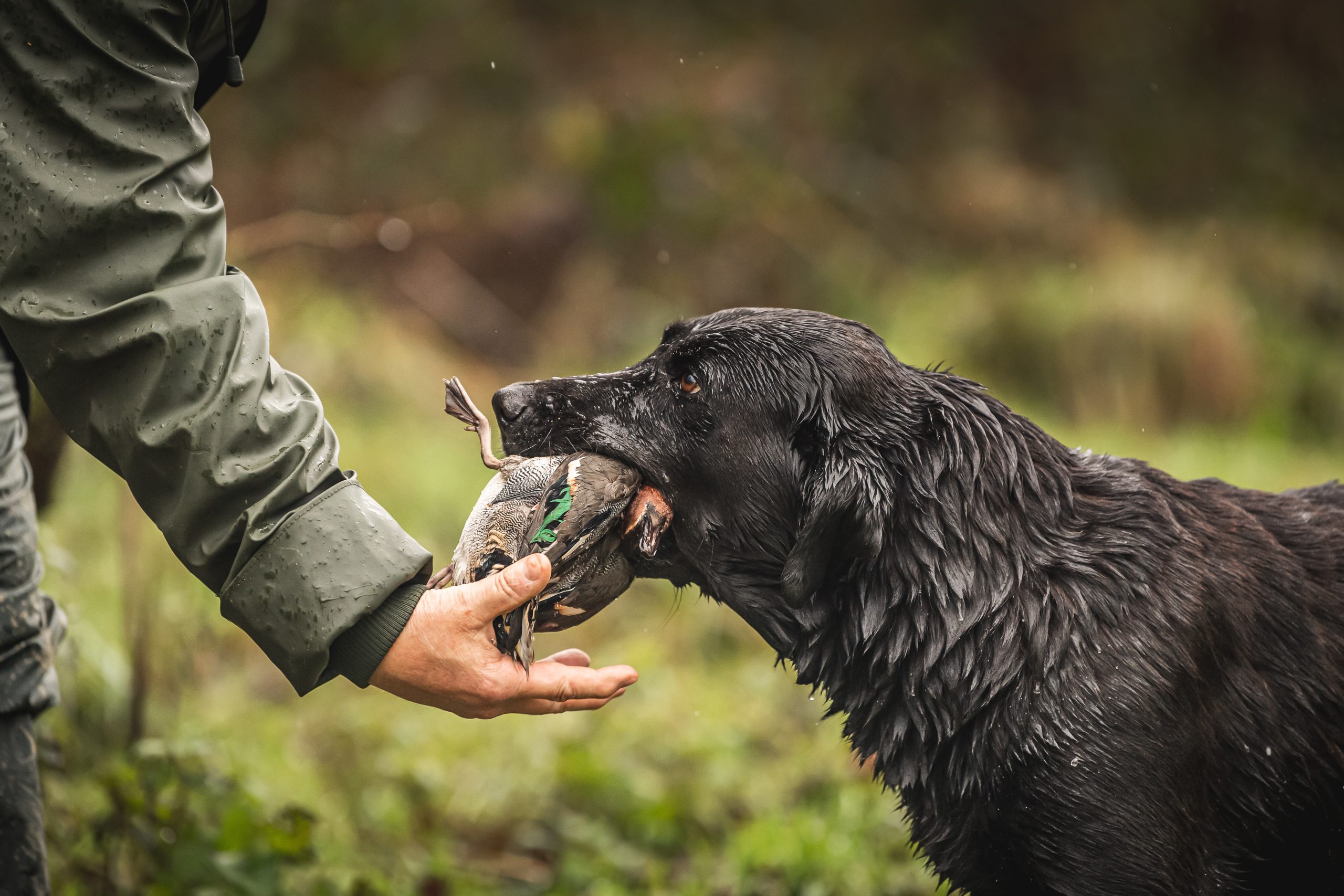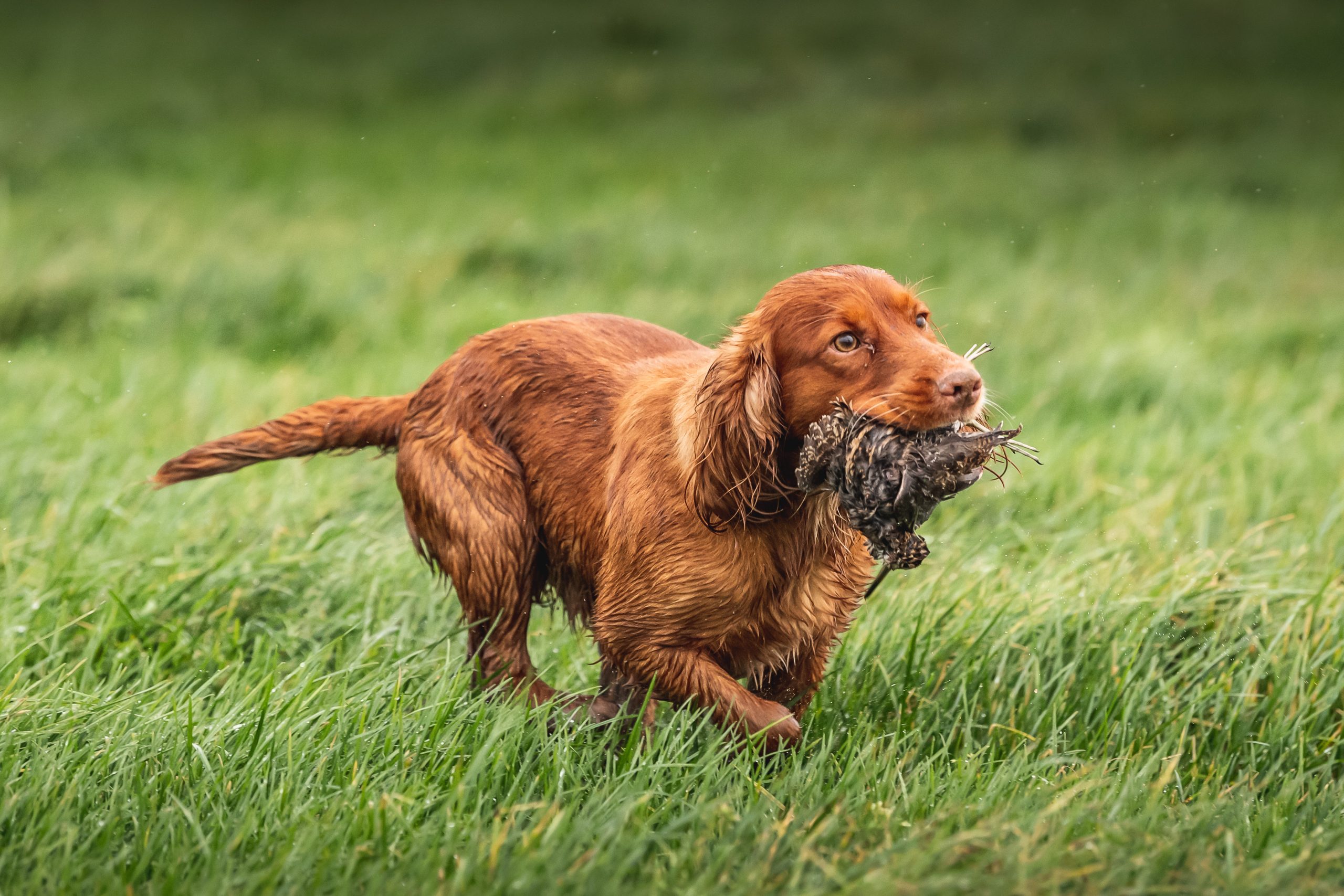Gundog news
Gundogs
Types of dog wounds: a vet describes the typical ones he sees in working dogs
Would you like to speak to our readers? We offer sponsored articles and advertising to put you in front of our audience. Find out more.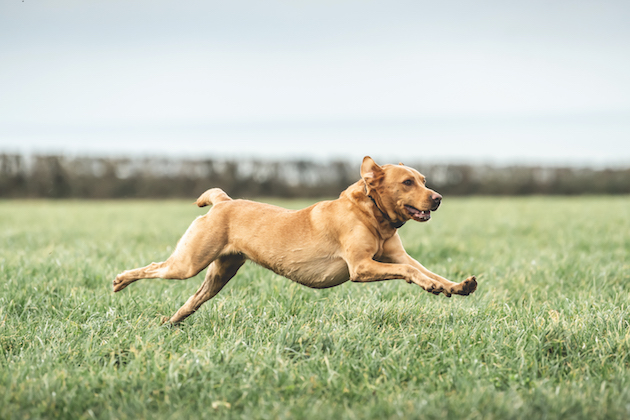 Running labrador
Usd 8 april 20 dog food
Running labrador
Usd 8 april 20 dog food
Q: I wondered what the typical types of dog wounds are that you see suffered by working dogs and how you deal with them? Terry Crocker, Buckinghamshire (Read working dog hazards to watch out for in the field.)
A: We do tend to see the same types of dog wounds over and over. While pet dogs tend to suffer most from broken glass cuts on their feet, the most common injuries suffered by gundogs come from barbed wire. (Read more on the hazards of barbed wire.)
Understandably, many owners either avoid it or train their dogs to go under rather than over fences, but accidents happen. The first rule must be to check all dogs thoroughly for wounds throughout the working day, and any cuts identified will always benefit from washing with copious amounts of clean water. As they say, the solution to pollution is dilution. I cannot stress this enough. Secondly, removing cross-contamination (and this will include hair that obscures or sticks to the wound) is vital. (Read how to bathe a dog’s wound.)
Types of dog wounds
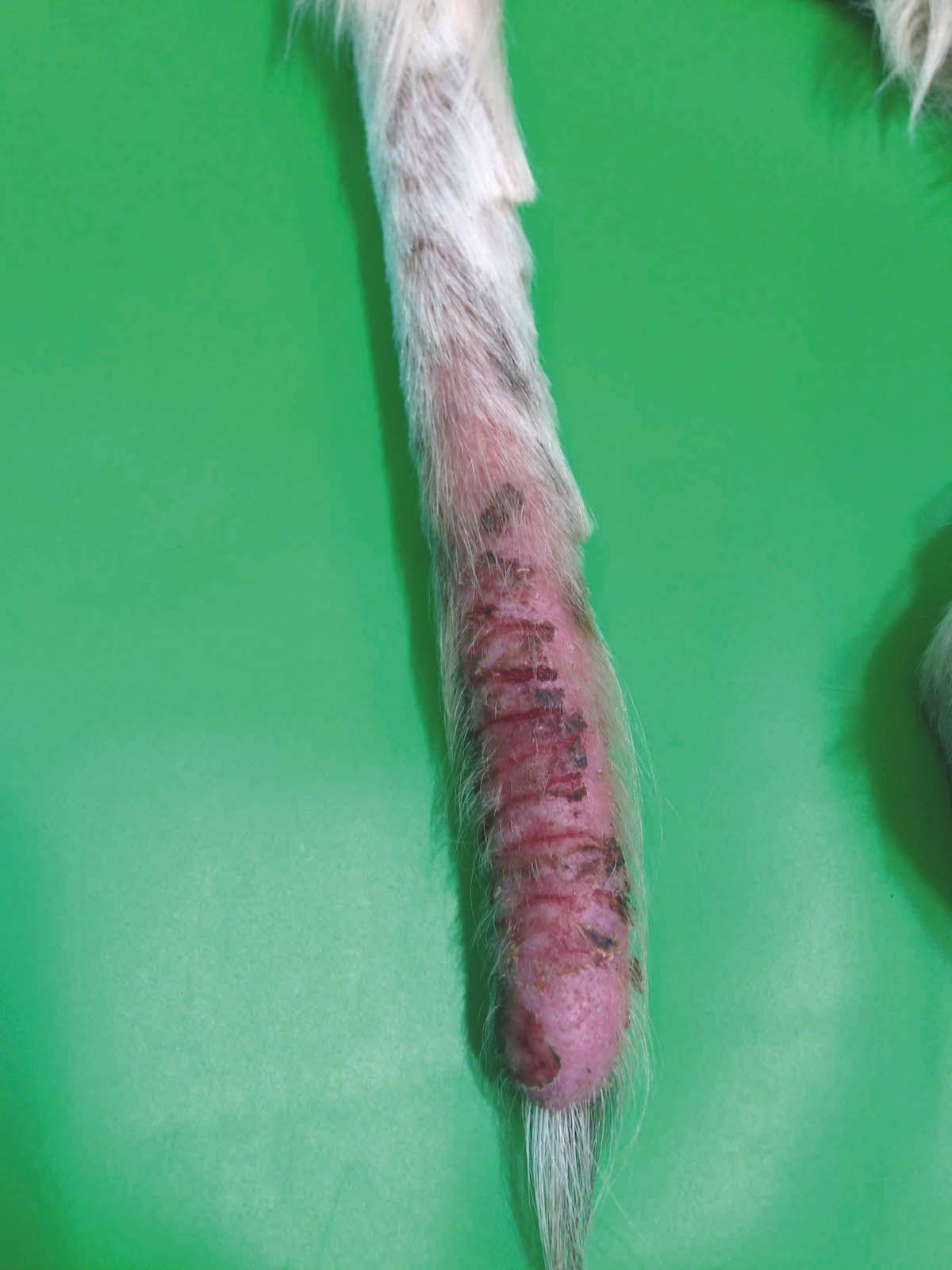
Chronic tail injuries can mean amputation is necessary
Tail Injuries
While tail shortening/docking has reduced the incidence of tail injuries, we still see acute damage, which is usually best dealt with by amputation of the affected part since healing tends to be slow. Wound breakdown is common, as are chronic injuries (which are mostly due to repeated trauma by wagging tails), and because of this amputation is best done sooner rather than later. Some respond to treatment, but these tend to be the minority. (Read more on tail docking.)
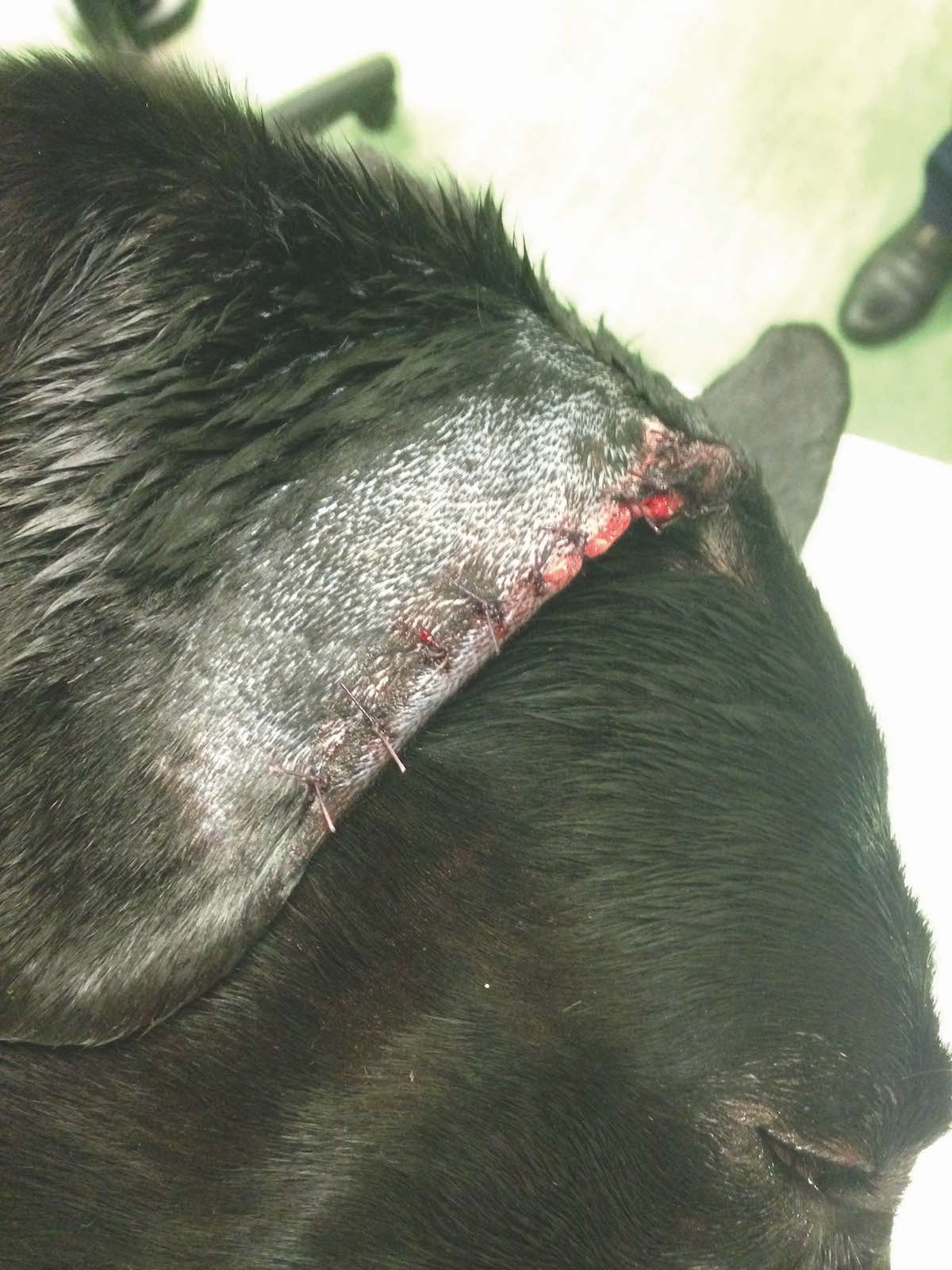
Ear wounds will bleed generously and need some form of protection
Ear Wounds
These bleed like the proverbial… Get them clean, then apply Vaseline to tiny wounds that are haemorrhaging. Skin glue is commonly and often successfully employed, but some wounds require suturing. It can be useful to cut the foot out of a leg of tights and roll the leg over the ear to allow transport to the vets without the bleeding ear flapping around. I tend to bandage with the ear flap down, as it is safer and easier to remove these dressings by cutting them over the forehead.

Leaving a large wound to heal naturally can result in worse damage
Old Wounds
These are probably the most frustrating for me, as often rapid treatment would have involved a simple wound closure that could resolve issues uneventfully. Unfortunately, add a few days of infection, hair contamination and the body’s attempts at healing and you are left with nasty, granulated areas that must be excised completely, so as to form a new, fresh wound. These will be larger than the original injury, and therefore more at risk of wound breakdown. Treatment must be carefully thought out. (Read how to treat a cut pad.)

Ignoring skin flaps can lead to serious consequences later on
Skin Flaps
Commonly triangular, especially when caused by barbed wire, skin flaps must be thoroughly investigated as they can hide foreign material or significant damage. This is particularly the case when flaps are on the posterior aspect of the limbs where there are lots of tendinous and muscular structures, and also when they are on the flank or abdomen. Many apparently benign skin flaps turn out to be significant injuries, so just make sure to lift and look.

The key to helping a wound heal is to keep the tension off it
Large Wounds Involving Tissue Loss
These occur when large flaps of skin suffer from a lack of blood, making death of the skin inevitable. It can be seen when a wound closure ‘breaks down’ and surgery is required. There is a shortage of skin and wounds are more likely to be under tension, which inhibits healing.
Vets use a variety of techniques to resolve this issue, including stretching skin before suturing, underrunning adjacent skin to allow movement and creating tramlines of skin to drag over the wound. I favour using Velcro. Take a long wound which is under tension: after suturing, the edges want to pull apart. To solve this, 3cm pieces of ‘hook’ are glued and sutured above and below the wound in a line. Lengths of straps of the softer ‘loop’ are attached to the top pieces of ‘hook’ and pulled down to be stuck on the ‘hook’ opposite, putting tension where the ‘hooks’ are sutured and relieving any on the wound. Use the softer ‘loop’ of the strap as it does not irritate the skin.
Related articles
Gundogs
Saying goodbye to a gundog
It’s the most difficult of subjects but here Tom Jones faces up to the sad reality of losing a beloved gundog and realises just how much they give us.
By Time Well Spent
Gundogs
How to curb nerves on your first working test
What can gundog handlers learn from sport psychology? Novice handler Emily Cartigny tries to curb the nerves in her first working test.
By Time Well Spent
Manage Consent
To provide the best experiences, we use technologies like cookies to store and/or access device information. Consenting to these technologies will allow us to process data such as browsing behavior or unique IDs on this site. Not consenting or withdrawing consent, may adversely affect certain features and functions.
Functional Always active
The technical storage or access is strictly necessary for the legitimate purpose of enabling the use of a specific service explicitly requested by the subscriber or user, or for the sole purpose of carrying out the transmission of a communication over an electronic communications network.
Preferences
The technical storage or access is necessary for the legitimate purpose of storing preferences that are not requested by the subscriber or user.
Statistics
The technical storage or access that is used exclusively for statistical purposes.
The technical storage or access that is used exclusively for anonymous statistical purposes. Without a subpoena, voluntary compliance on the part of your Internet Service Provider, or additional records from a third party, information stored or retrieved for this purpose alone cannot usually be used to identify you.
Marketing
The technical storage or access is required to create user profiles to send advertising, or to track the user on a website or across several websites for similar marketing purposes.

